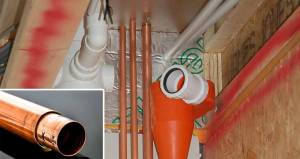
- Blogs
- Posted
Will we ever return to normal?
Covid-19 has inadvertently given us a glimpse of what sustainable living patterns might look like, and we must seize this opportunity for long-lasting positive change, says Dr Peter Rickaby.
This article was originally published in issue 34 of Passive House Plus magazine. Want immediate access to all back issues and exclusive extra content? Click here to subscribe for as little as €10, or click here to receive the next issue free of charge
In one of my early columns here I recalled asking my students to imagine hovering above a city for a day, and to describe what they would see. They described tides of commuters on bicycles, in cars, on buses and metros, and on trains, flowing to work in the morning and flowing home again to suburbs, hinterland towns and beyond, in the evening.
They remarked on the numbers of people and the distances involved – commutes of fifty miles each way being common. Some also described cross-commutes between sub-centres, and local commutes into sub-centres and hinterland towns, to work and school. Overlaid were inter-city journeys to attend meetings, conferences or exhibitions, and journeys to deliver materials and distribute goods.
My assignment question associated with this exercise was, “do you think what you have described is a sensible pattern of settlement?” Most students responded that it was not, some that it was clearly unsustainable, one (emphatically) that it was insane.
Subsequently, we talked about the trade-off between energy use in buildings and in transport, the advantages of higher or lower densities (the jury is still out on that), the integration of agriculture with urban activities, and what a sustainable pattern of settlement might look like.
We have been given a glimpse of a sustainable future.
In a recent column, I pointed out the nonsense of referring to the Bloomberg building in London as ‘sustainable’ when it has a huge carbon footprint associated with those who work there commuting to and from their distant homes. My point in both these examples is that the physical separation of our urban places of work from suburban and hinterland homes is at the heart of the problem of sustainability.
This applies particularly to cities in the UK and USA, and perhaps elsewhere, but many cities in Europe and Asia have higher residential densities and smaller commuter catchments, so the tides there are smaller, although still significant. In European cities the tradition of urban apartment living is strong, and even in London we have spent ten years building apartments and raising densities as fast as we can.
Nevertheless, it is still the case almost everywhere that as households become more affluent they vote with their wheels to live at the edge of the city or beyond, where densities, air pollution and crime rates are lower, schools are often perceived to be better, and open space is more accessible.
This was the settlement trend of the twentieth century, facilitated by cheap fuel, carelessness about emissions and complacent attitudes to the environment, and it has only recently begun to change.
Now we suddenly find ourselves in different circumstances. A global pandemic and public health emergency left many of us locked down at home. We are now working, meeting, teaching, learning and shopping online, and getting many of the things we need delivered. Commuter trains are much less crowded, bus services have been cut and roads are no longer congested.
Almost nobody is flying anywhere. Energy use in transport and commercial buildings is down (though up slightly in domestic buildings), carbon dioxide emissions are down, urban air quality is much improved.
It is not all great of course – we are not visiting family and friends, taking holidays or weekends away, watching or playing sport, drinking in pubs and bars, or eating out at restaurants. Notwithstanding these inconveniences, we have been given a glimpse of what a sustainable future could look like. We are learning which activities need to be centralised and which can be networked, that working or studying from home are good options for many, and that online media can provide social cohesion for everyone, not just for teenagers.
When the emergency is over (if it ever is), conservative, populist politicians, bankers and big business will want to return everything to the way it was before – to restore their profits and our former ‘way of life’, even if it was wasteful and unsustainable. Even if healthcare was under-funded, migrants were under-valued, homeless people slept on our streets and our environment was being destroyed.
However, I predict that many will resist. Encouraged by David Attenborough, Greta Thunberg, and Extinction Rebellion, we will have the opportunity go further towards a sustainable way of living and working.
Employers will trust their staff to work from home, facilitating team cohesion by events like morning and evening online meetings. Employees (especially parents) will value the flexibility associated with working from home. Homes will slowly be modified to make home-working easier.
Cars will become intermittently-used public services, and with no ‘peaks’ public transport will become cheaper, more flexible and more comfortable.
How sustainable will the outcome be? That remains to be seen, but I suspect that things will never be quite the same again. Going back is not a sustainable option.







